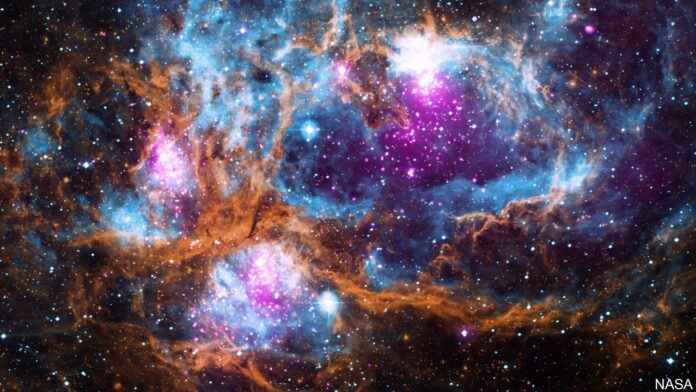December brings our home planet through the Geminid meteor trail from this week through the 17th. With the shower peaking on the 13th, these meteors are moving 78,000 mph and yet are considered to be slow. Your best opportunity to glimpse these ‘falling stars’ is between 1:00 AM and dawn as they seem to be emerging from the constellation Gemini like football players onto the playing field.
However, even by 9:00 PM there just might be some to see. Gemini is well up in the southeast by that time of the night, near the constellation Orion. The two bright stars that mark the heads of the twin brothers are Pollux and Castor. Castor is the blue star on the right facing a viewer. 51 light years distant from our planet and nearly three times as massive as our sun, Castor has its own planet orbiting its circumference. Follow the link to see an image of the two stars. Another intriguing piece of information is this is actually a system of three pairs of stars which orbit each other.
Have you been keeping up with the relative positions of Mars, Saturn, and Jupiter? The great conjunction of Saturn and Jupiter will be on the 21st, which happens to be the date of the winter solstice, when the Sun reaches its shortest arc of motion across the sky. Jupiter will be 0.1degree southeast of Saturn.
With low power on a telescope the two can be seen within the same field of view. It may boggle your brain to realize that Jupiter is about 551 million miles away from Earth and Saturn is nearly twice that.
With all the many disruptions and changes in how we have been used to living, it may comfort you to know that the celestial events have been going on since the beginning and will continue to do so until…These meteor showers and planetary motions have intrigued humans since the first humans looked up.
One of the great Biblical celestial events is the star that led the wise men from the east to where the young child lay and as we enter this winter solstice/yuletide season the question again seeps into our thoughts occasionally. Although no one truly knows what that star was, watching the motions of the bright planets adds credence to the idea that it was a conjunction of planets.
The fact that early Christian priests used the pagan winter solstice to give the people they ministered to a different reason to not fear the dark days of winter is just another wonderful means of adding joy to this time of the year.
As the earth moves in its tilted orbit, we experience shorter hours of daylight in our hemisphere while the southern hemisphere experiences longer hours of daylight. Ancient pagan cultures feared the darkness and lit bonfires and burned Yule logs to bring back the sunlight. Oddly enough after a few days they were gratified to see that their rituals had succeeded, and the Sun began to linger longer and longer to their great relief.
It is not cold on our planet due to distance from the Sun, rather it is due to that tilt and the changing hours of daylight which results in less heating of the surface of Earth from the first day of summer through the first day of winter. There are internet sites that have photos taken over the period of a year that reveal the position of the Sun throughout the seasons that are quite fascinating to study. The following one has great information.
Until next week, KLU.





